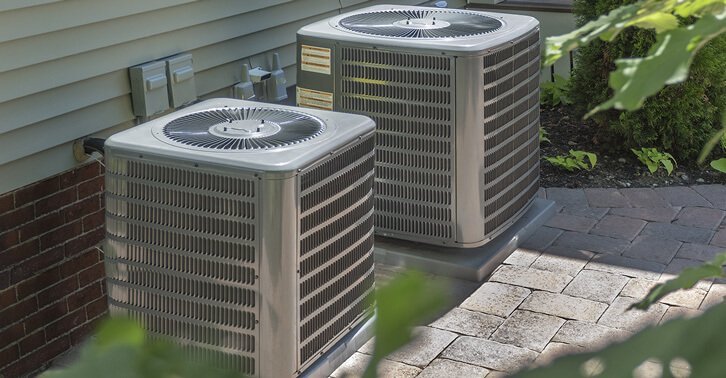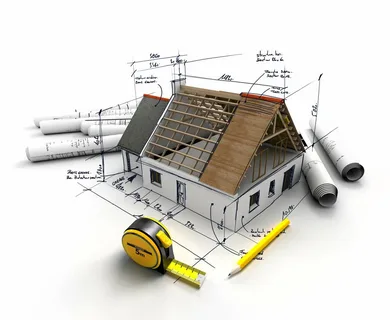If you find yourself renovating, replacing, or even building HVAC equipment, you will find that the options available for heating and cooling your space are plentiful.
You will already be very familiar with the typical options such as gas furnaces, boilers, and electric baseboard, as well as split system air conditioning units. However, if someone suggested a heat pump to you, you might have questions.
With furnace prices being what they are, and boilers not always being as reliable and consistent as you may hope, heat pumps are a great alternative.
However, how can something named a ‘heat pump’ provide you with both heating and cooling?
Let’s explain…
Table of Contents
What Is A Heat Pump?
Heat pumps are simply a type of HVAC equipment which is able to give you both cooling and heating. They use a type of mechanical energy to remove heat from the air, and then move the heat inside or outside, depending on if your space needs cooling or heating.
It really is just that simple. They are efficient in energy and are also very eco friendly as they do not require the burning of any fossil fuels to heat your space.
They have been used for a long time in areas that do not get freezing, however, in states such as New York or Maine, people are not very familiar with the concept.
The reasoning for this is that it was only recently that heat pumps were made to be able to provide enough heat to climates where temperatures can drop below 20 degrees.
This is changing now, however, as heat pump technology is improving and is now efficient enough to be used in colder climates.
How Do Heat Pumps Work?
Heat pumps are essentially air conditioners with the capacity to work in reverse, and provide heat instead of cooling. If there’s a heating and cooling problem you want to look for heating services near me that are professional and experts to solve the problem.
This means that in warm weather climates, heat pumps will absorb heat from the air inside the home and move it outside, conditioning the air. But, in cold weather, heat pumps can give heat by taking hot air from the outside air and moving it into the home.
We know you have questions, the idea of being able to remove heat from the cold air that is outside seems insane and illogical. However, there is always heat in the air, even in cold weather, there is just less of it.
This is why heat pumps work best in more mild climates. The colder the air gets outside, the harder a heat pump will need to work in order to absorb the energy it needs to transfer it into your indoor space.
However, this technology has improved so much that it can even produce heat in the more Northern states now.
Types Of Heat Pumps
There is no one type of heat pump, however. The ones we have referred to so far are known as ‘Air source heat pumps’, because they literally absorb the heat from the air. However, you can also get ones that use heat from underground. These can be useful, but they are not ideal everywhere.
There are also many other types of heat pumps that you could choose from.
Split System
Split system heat pumps will have two parts, they have an outside and inside unit, much like a traditional air unit in residencies. However, there is one main difference, split system heat pumps have coils which will absorb heat using evaporator coils, and then release it using condenser coils in the outside and inside units.
So, a split system heat pump is able to absorb heat from in or outside, and can release it in or outside. So it can remove heat to cool it or add heat to warm it.
Packaged
Packaged heat pumps are very similar, however, all coils are located inside one unit which will often sit on your rooftop.
It is also known as a rooftop unit.
The hot or cold air will be delivered into the building through ductwork and will pass through the walls or roof.
The answer as to why you would choose this over a split system pump is in your space. If you have easy roof access, it could be less pricey to install, but they are not so efficient in tall buildings.
Ducted/ Ductless
Most of these pumps will give you your hot air via ductwork. Yet, on occasion, this is not practical, especially with older buildings or with supplemental spaces.
Where this is the case, a ductless miniature split heat pump can be ideal. So, instead of having ducts, a system like such would transfer heat via a refrigerant line system to a coil or fan unit that is inside the wall or even ceiling.
Of course, there is a downside to these, you will need a coil or fan unit in each room, and each will need climate control.
Let’s not forget they also do not remove humidity as well as ducted systems do.
VRF
VRF, also known as variable Refrigerant Flow, is a more recent type of heat pump tech which has some epic benefits in comparison to traditional cooling and heating systems.
These are much more efficient, quiet, and are able to more precisely control conditions in more than one zone with a different heat and cool requirement.
They are actually able to give cool air and hot air to different places at the same time.
How Do Heat Pumps Heat & Cool?
Heat pumps are able to heat and cool areas as they are made using a component which is known as a ‘reversing valve’. This reversing valve allows the system to create a change in the flow of refrigerant inside the system.
This allows it to operate on a cooling mode, or on a heating mode.
During winter times, when in a heating cycle, the heat pump will absorb the heat from the air, and concentrate it in its heat exchange, blowing out the hot air into your home or building.
During the summer, the heat pump will instead remove the heat and humidity from air indoors and will transfer it to the outside.
It does not actually create any heating or cooling, but instead it just transfers heat from one location to a different one, using refrigerant.
Heat pumps do not use any fossil fuels, and they use only around 25% of the amount of electricity a whole-home air conditioning system would use. So, they are seen as being very green and very comfortable heating and cooling systems.
Why Are They Worth It?
Heat pumps offer a lot of convenience for homes. However, they are also able to save more energy when they are in their mode for heating in comparison to other forms of home heaters. This is especially true for home electric heaters.
As heat pumps simply move heat from one location to another, instead of actually creating the heat using an electrical resistance, they are actually able to consume much less power than a vast majority of other heating alternatives.
They are also a much safer alternative to any forms of using natural gas as a way of heating, and they are also more eco-friendly.
Let’s not forget that they have both heating and cooling functions, and depending on the type of heat pump that you get installed, it can actually be less expensive in terms of installation and maintenance costs as well.
This makes heat pumps all round less expensive than other popular alternatives.





